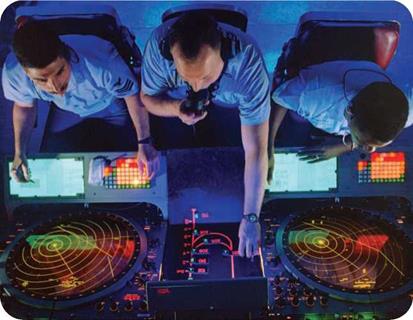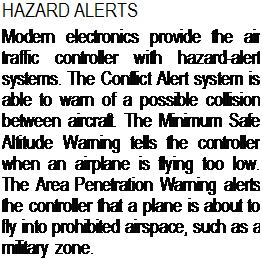The Flight Plan
Before takeoff a pilot completes a flight plan. This shows the flight as stages, or sectors. It lists details of aircraft type and registration, speed in knots (nautical miles per hour), height, wind speed, fuel consumption (in hours and minutes), number of passengers, and estimated
time for the flight. It indicates whether the pilot will be using visual flight rules (VFR) or instrument flight rules (IFR). The plan always allows for an aircraft to have some fuel in reserve, and it

 includes details of alternate landing fields in case of emergency.
includes details of alternate landing fields in case of emergency.
This flight plan goes to control centers along the planned route. Flight plans are usually required for all flights using IFR. For VFR flights, they are optional (although recommended) unless an airplane is crossing national borders. Air traffic controllers enter flight plans into the FAA computer, which generates a flight progress strip. The strip is passed from center to center along the route and contains all the data needed to track the aircraft.
After an aircraft has been given clearance to take off, it is directed away from the airfield onto an outgoing route, safely clear of all other planes. A transponder on board picks up radar signals from the ground and relays back flight details, which appear alongside a “blip” on the controller’s radar screen. During the flight, an airplane’s progress
is followed by a minimum of two traffic controllers in each sector of ARTCC airspace. Pilots and controllers exchange information during the flight, in case a change of plan is necessary to avoid bad weather, air turbulence, or possible congestion around an airport.










